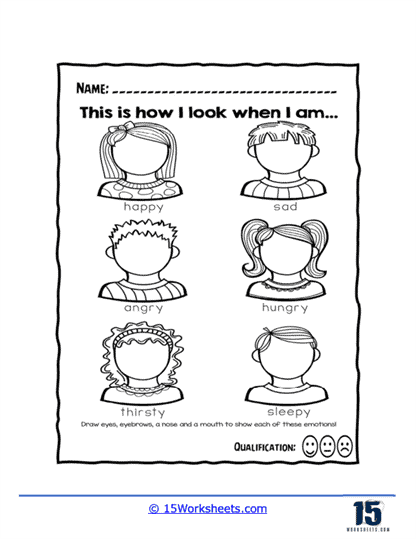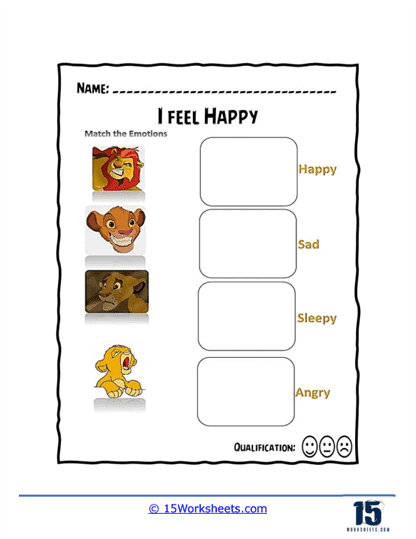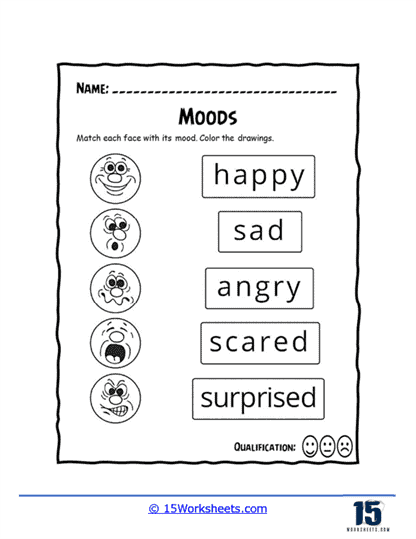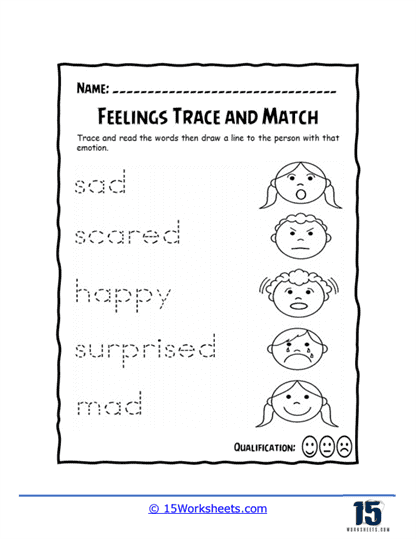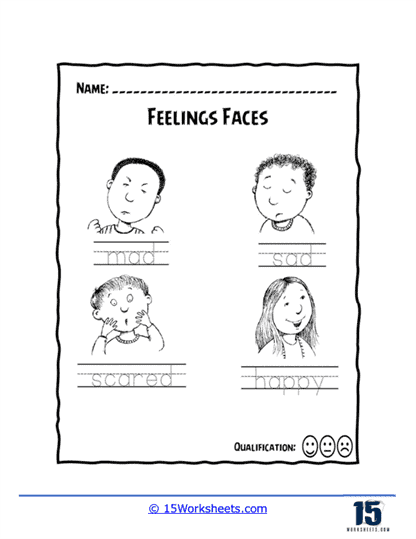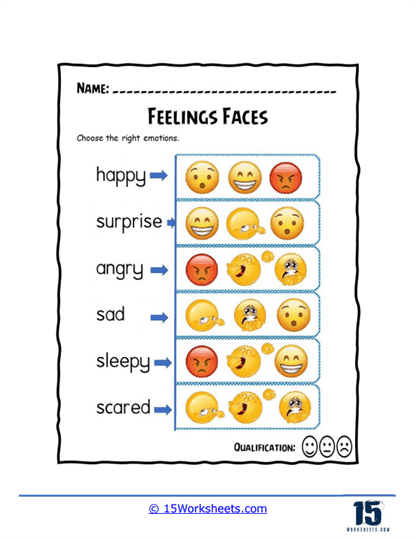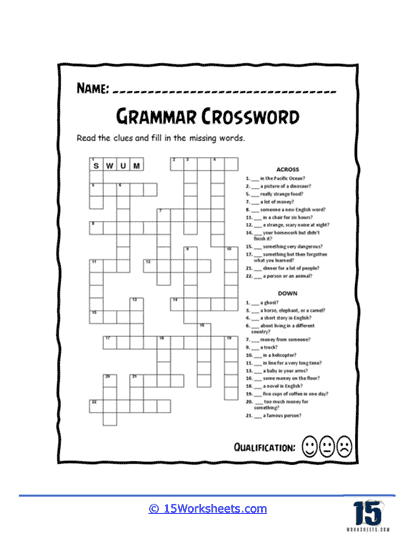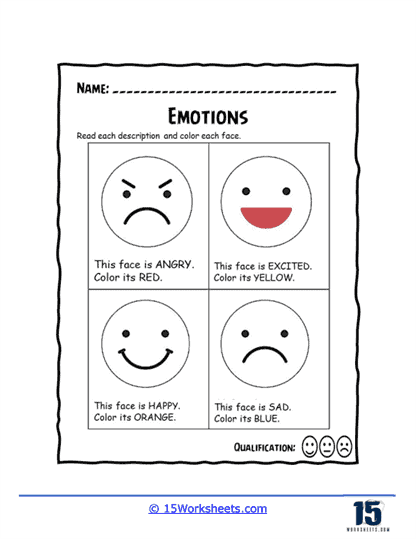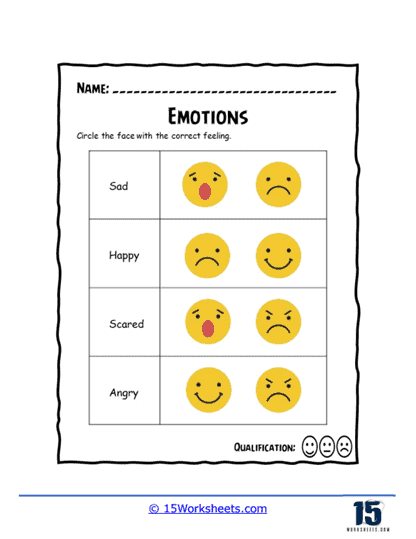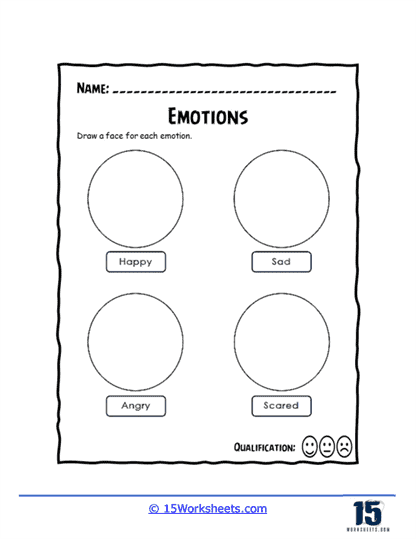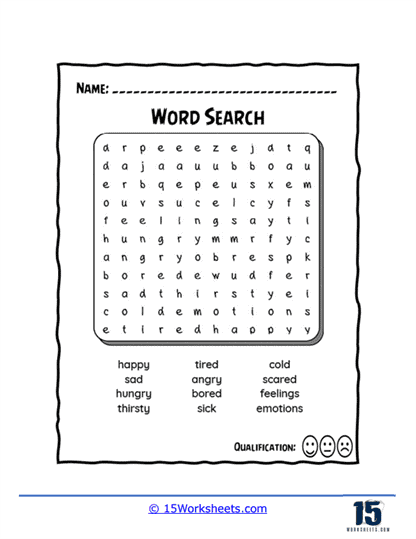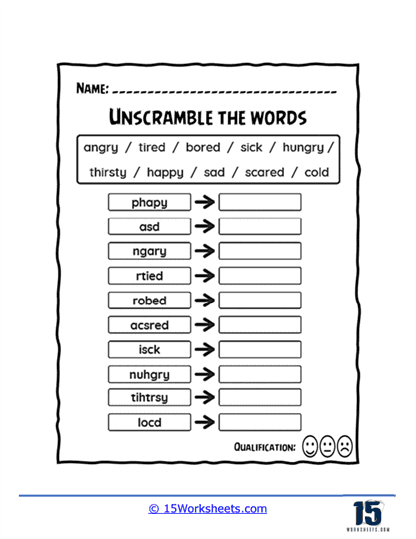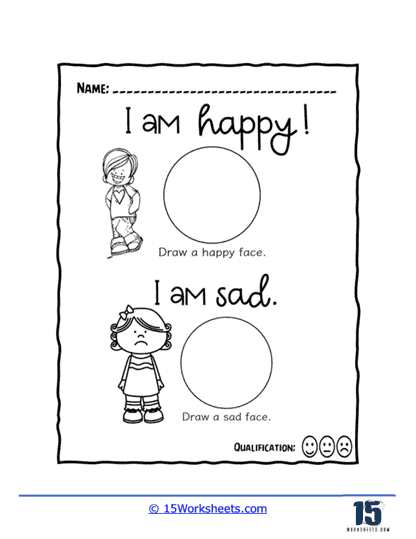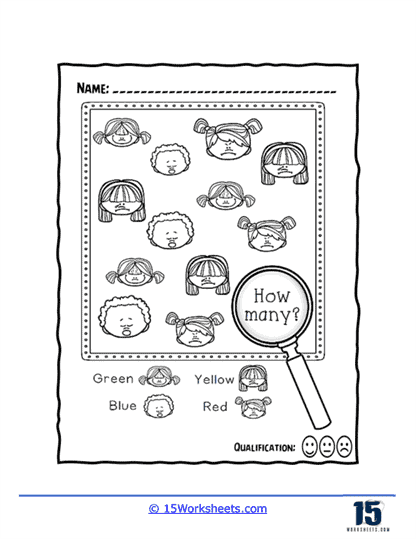Feelings Worksheets
All About These 15 Worksheets
Understanding and expressing emotions is an important skill for young students as they navigate their social and emotional development. This series of 15 worksheets on Feelings is specifically designed for young learners, providing them with age-appropriate activities to explore and recognize their emotions. Each worksheet within this series focuses on different aspects of feelings, helping young students develop emotional awareness, empathy, and effective emotional expression. Through these worksheets, students will:
- Draw faces to show different emotions or feelings, fostering creativity and enriching their vocabulary;
- Match pictures to the feelings they show;
- Trace different vocabulary words for feelings or emotions, improving their vocabulary retention and penmanship;
- And be familiar with vocabulary words that describe different feelings or emotions.
These Feelings worksheets for young students provide a supportive and engaging framework for their emotional development. By actively participating in these activities, students will develop emotional intelligence, enhance their self-awareness, and acquire the tools necessary to recognize, understand, and express their emotions effectively. Overall, this series empowers young learners to navigate their feelings with confidence, fostering healthy emotional growth and promoting positive social interactions.
How to Teach Students About Feelings
Personal feelings refer to the emotions and sensations that individuals experience in response to various situations, thoughts, or events in their lives. These feelings can be positive, negative, or neutral, and they often influence individuals’ behavior, decision-making, and overall well-being.
Teaching the concept of personal feelings to kids involves helping them understand, identify, express, and manage their emotions in a healthy and age-appropriate manner. Here are some strategies for teaching personal feelings to children:
- Use simple language. Start by explaining feelings using simple and age-appropriate language. For example, you can describe feelings as “what we feel inside when something happens.”
- Identify feelings. Teach children to identify and name their emotions by providing them with a list of common feelings, such as happy, sad, angry, scared, excited, or frustrated. Use pictures or emojis to help them visualize each feeling.
- Share examples. Give examples of situations that might trigger specific feelings. For instance, you can say, “You might feel happy when you play with your friends, or you might feel sad when you lose your favorite toy.”
- Encourage expression. Teach children to express their feelings verbally, using “I” statements, such as “I feel happy when…” or “I feel sad because…”. Encourage them to share their emotions with you, their friends, or other family members.
- Model healthy emotional expression. Children learn by observing others. Show them how to express and manage emotions by modeling healthy emotional expression and coping strategies in your daily life.
- Validate feelings. Let children know that it’s okay to feel different emotions and that everyone experiences a range of feelings. Acknowledge and validate their feelings, even if you don’t necessarily agree with their perspective.
- Teach coping strategies. Help children develop healthy ways to manage their emotions, such as deep breathing exercises, counting to ten, drawing, or talking to someone they trust.
- Use stories and role-playing. Use children’s books or role-playing activities to teach about feelings and emotions. These tools can help children explore various emotions and learn how characters manage their feelings in different situations.
- Encourage empathy. Teach children to understand and empathize with others’ feelings by asking questions like, “How do you think your friend felt when that happened?” or “How would you feel if you were in their shoes?”
- Create a supportive environment. Encourage open communication about feelings in your home or classroom, and let children know that it’s safe to share their emotions without fear of judgment or ridicule.
By teaching children about personal feelings, you help them develop emotional intelligence, empathy, and self-awareness, which are essential life skills for building healthy relationships and navigating various challenges throughout their lives.


